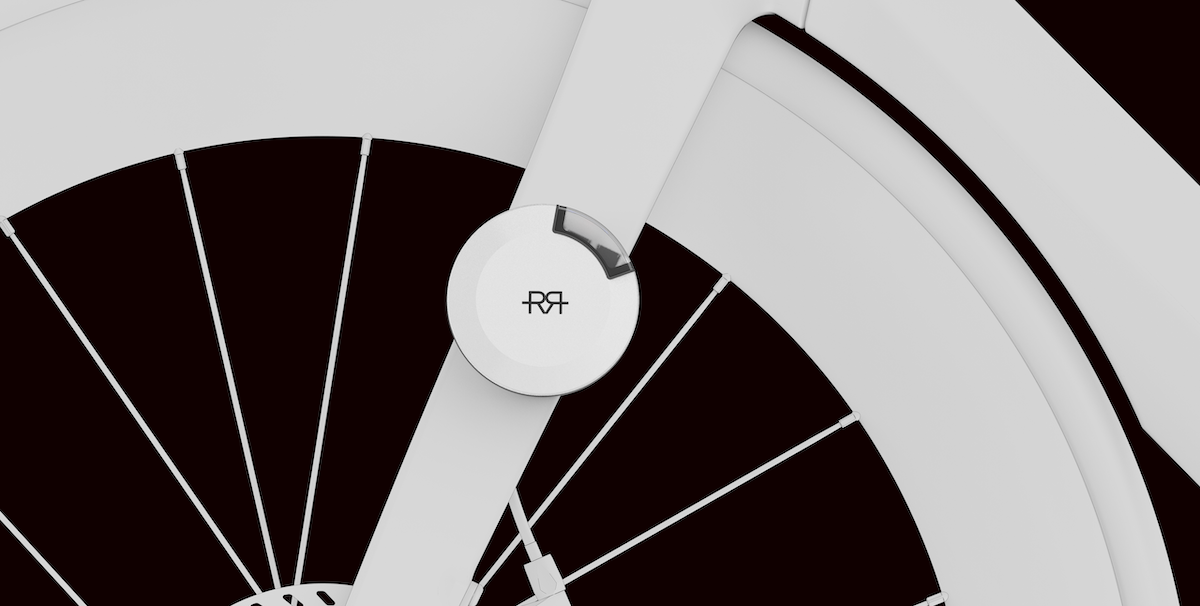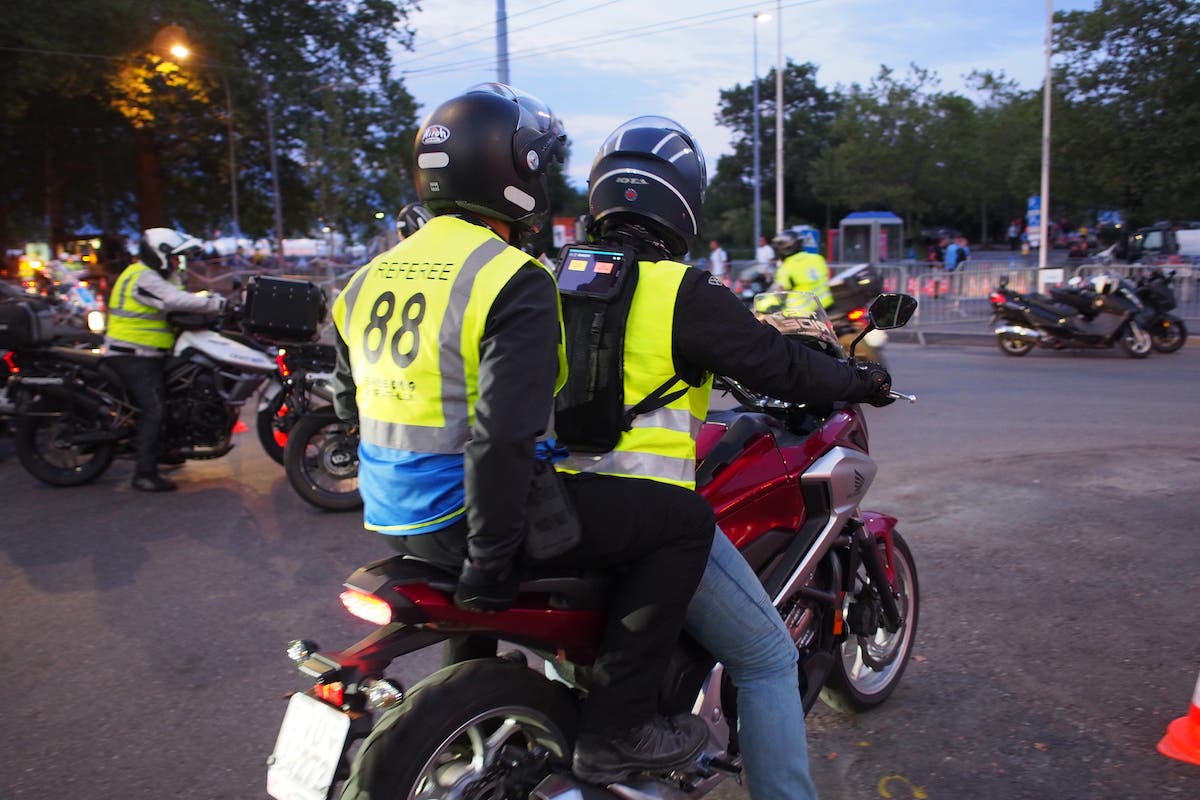Race Ranger Announces High-Tech Draft Detector

(Photo: Race Ranger)
Two professional triathletes from New Zealand, Dylan McNeice and James Elvery knew triathlon had a problem. It was plain to anyone who has seen photos from flat, crowded, multi-loop iron-distance courses: Triathletes either don’t know or don’t care about drafting rules that say they must stay either three bike lengths behind (USAT), 12 meters behind (Ironman), or 20 meters behind (Challenge) the rider in front of them. So they came up with Race Ranger.
Elvery said this fascinating new technology started with nothing more than an idea, before finally landing on a combination of Ultrawideband (UWB), Bluetooth, GPS/GNSS, and LoRa—a similar setup to what large warehouses use to accurately track their stock indoors.
What do the Race Ranger devices do?
Two small, sub-100-gram devices will be attached to the front and rear of the rider’s bike. The front, fork-mounted device will sense the other devices around it, while the rear will also act as a sensor and provide a visual cue to riders behind. When a rider approaches a pre-set threshold, the rear light will flash a slow, red light, letting them know they’re at a safe distance to ride behind. As they get closer to the race’s pre-established draft zone, they’ll see a rapid red flashing light—letting them know they’re close.

Once riders enter that dreaded draft zone (whatever the race has pre-set it as), the light will switch over to a rapidly blinking blue light with an intermittent red flash every five seconds to help the passing rider know how long they have to make that complete pass. (Ironman is 25 seconds, for instance.)
How do Race Ranger devices catch drafters?
But the devices do more than just let racers know when they’re breaking (or getting close to breaking) the rules, they also notify race referees—equipped with mobile monitoring units—who’s breaking the rules, for how long, and even how often. While race officials still need to manually make the call to hand out a penalty, the devices take away the guesswork on drafting distances and even give information on things that moto-bound officials can’t see. For instance, the touch screen tablets will show a “high score” board of which racers are breaking the rules the most (and the longest)—helping target serial offenders who might watch or listen for officials as they approach, as opposed to those who happen to make a mistake in view of the referees.
The devices don’t necessarily need to be connected to the internet (future versions with enhanced GPS may allow spectators to track racers’ positions), so their range is far-reaching, not dependent on cell service, and can get to referees anywhere from two to six miles away.

What about penalties?
If a racer does happen to get a referee-issued penalty, the racer’s number is wirelessly sent to a penalty tent with a monitor screen, where the rider will have to stop, serve the time in the “smart tent” that senses their presence, then move on. Race officials can even set specific areas where it may not be safe or even feasible to not draft, helping eliminate false positives that could distract race officials from their duty.
Who will use Race Ranger?
While the devices are currently being tested in smaller fields, the hope is that the technology would next be used in competitive fields—like pro events—or potentially where championship slots are on the line. Ideally, the developers hope that devices would be placed on every racer at every event, but that’ll be up to race directors. The cost of the devices, that Race Ranger effectively rents out to events, will likely end up being built into race entry fees.
Where/When Will we see Race Ranger at Races?
Elvery and McNeice are hoping to do a slow, small-scale rollout in New Zealand over the next six months, with their eyes set on early 2023 for bigger events potentially in Europe with field sizes in the thousands. It’s likely that events like non-draft World Triathlon world championships and its qualifiers may be the first to adopt the devices, given a partnership announced with World Triathlon, but the timing of that depends on pandemic issues and device production (which has been a struggle given supply-chain hiccups).
Effectively, Elvery says the success of these devices rests on triathletes’ demand to see fair races with less drafting. The more triathletes request solutions to an age-old problem, the quicker this new tech will be implemented into races throughout the world.